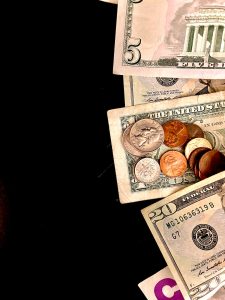Forex trading has become a popular way to invest money and earn profits in the financial market. However, it can be difficult to trade successfully without the right tools and strategies. One way to make the process easier is by creating a forex script. A forex script can automate certain trading tasks and make it easier to analyze the market. In this article, we will provide a step-by-step guide on how to create a forex script.
Step 1: Define your trading strategy
The first step is to define your trading strategy. A trading strategy is a set of rules that you follow to make trading decisions. This could be based on technical indicators, fundamental analysis, or a combination of both. You should be clear about the type of trades you want to make, the currency pairs you want to trade, and the timeframes you want to use.
Step 2: Choose a programming language
The next step is to choose a programming language. There are several programming languages you can use to create a forex script, including Python, MQL4, and EasyLanguage. Python is a popular language for data analysis and has a large community of developers. MQL4 is a language specific to MetaTrader 4, which is a popular trading platform. EasyLanguage is a proprietary language used by TradeStation, another trading platform.
Step 3: Learn the basics of programming
Before you can create a forex script, you need to learn the basics of programming. This includes learning about variables, data types, functions, loops, and conditional statements. You can find online tutorials, courses, and books that will teach you the basics of programming.
Step 4: Write your code
Once you have learned the basics of programming, you can start writing your code. The code will depend on your trading strategy and the programming language you are using. For example, if you are using Python, you can use the pandas library to analyze data and the matplotlib library to create charts.
Step 5: Test your code
After you have written your code, you need to test it. This is an important step because it will help you identify any errors or bugs in your code. You can use a backtesting tool to test your code on historical data. This will give you an idea of how your strategy would have performed in the past. You can also use a demo account to test your code in real-time without risking any real money.
Step 6: Optimize your code
Once you have tested your code, you can optimize it. This involves tweaking your strategy to improve its performance. For example, you may need to adjust the parameters of your indicators or change the timeframes you are using. You can use optimization tools to test different combinations of parameters and find the best settings for your strategy.
Step 7: Implement your code
After you have optimized your code, you can implement it in your trading platform. This will allow you to automate certain trading tasks and make it easier to analyze the market. You should be careful when implementing your code and make sure that it is working correctly before you start trading with real money.
In conclusion, creating a forex script can be a valuable tool for traders who want to automate certain trading tasks and make it easier to analyze the market. By following the steps outlined in this article, you can create a forex script that is tailored to your trading strategy and helps you achieve your financial goals. Remember to test and optimize your code before implementing it in your trading platform, and always be careful when trading with real money.






